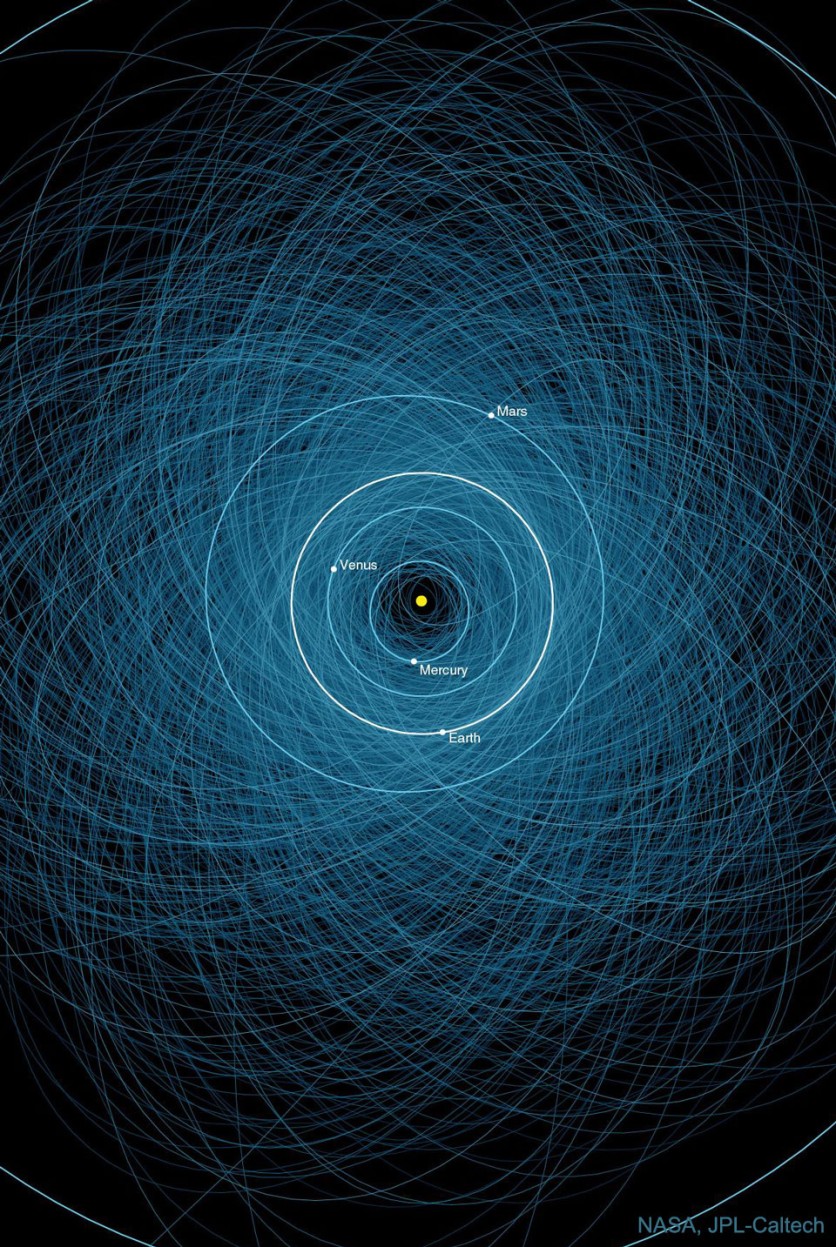The question of whether asteroids pose a threat to our planet has captivated scientists and space enthusiasts alike.
While the chances of a dangerous asteroid collision in a given year are relatively low, the potential impact on life on Earth has prompted a concerted effort to identify and track these celestial bodies.
NASA, at the forefront of this endeavor, has recently shed light on the orbits of over 1,000 known Potentially Hazardous Asteroids (PHAs), revealing their tantalizing trajectories through space.

Intricate Dance of Asteroids
Illustrated by NASA's Jet Propulsion Laboratory (JPL-Caltech), the depiction showcases the intricate paths these massive tumbling rocks composed of rock and ice followed.
Measuring more than 140 meters in diameter, these PHAs venture as close as 7.5 million kilometers to Earth-approximately 20 times the distance between our planet and the Moon.
Although none of these known PHAs are projected to collide with Earth within the next century, it's important to note that not all PHAs have been discovered, and beyond the 100-year mark, predicting their trajectories becomes increasingly challenging.
The potential consequences of a collision with an asteroid of this size are indeed significant. A substantial impact could trigger devastating tsunamis, among other catastrophic effects.
Recognizing the importance of developing strategies to safeguard our planet, NASA conducted a successful test mission known as the Double Asteroid Redirection Test (DART) last year.
This pioneering mission aimed to explore methods for redirecting asteroids and mitigating potential threats.
While larger PHAs garner significant attention, it is worth mentioning that Earth experiences regular encounters with smaller rocks and ice fragments on a daily basis. Fortunately, most of these encounters pose no immediate danger.
However, they do provide captivating moments such as vibrant fireball displays and awe-inspiring meteor showers, etching indelible memories in the minds of those fortunate enough to witness them.
Read Also : NASA Features Image of Pulsars, Gravitational Waves Unveiling Supermassive Black Hole Binaries
Understanding PHAs
The ongoing efforts to catalog and understand PHAs represent a vital step in safeguarding our planet from potential cosmic hazards.
By identifying these celestial interlopers and deciphering their trajectories, scientists can refine models and predictions, improving our ability to respond effectively if a future threat arises.
NASA's dedication to this mission is driven by the recognition that asteroid impacts have played a significant role in past mass extinction events. By unraveling the mysteries of PHAs and enhancing our knowledge of their behaviors, we enhance our preparedness to safeguard life on Earth.
The intricate dance of Potentially Hazardous Asteroids around our planet fuels both fascination and concern. By studying their orbits, NASA takes us one step closer to comprehending the universe's complex tapestry and devising strategies to protect life on Earth.
Related Article : NASA's James Webb Space Telescope Captures Starlight From Massive Black Holes in the Early Universe

ⓒ 2025 TECHTIMES.com All rights reserved. Do not reproduce without permission.




